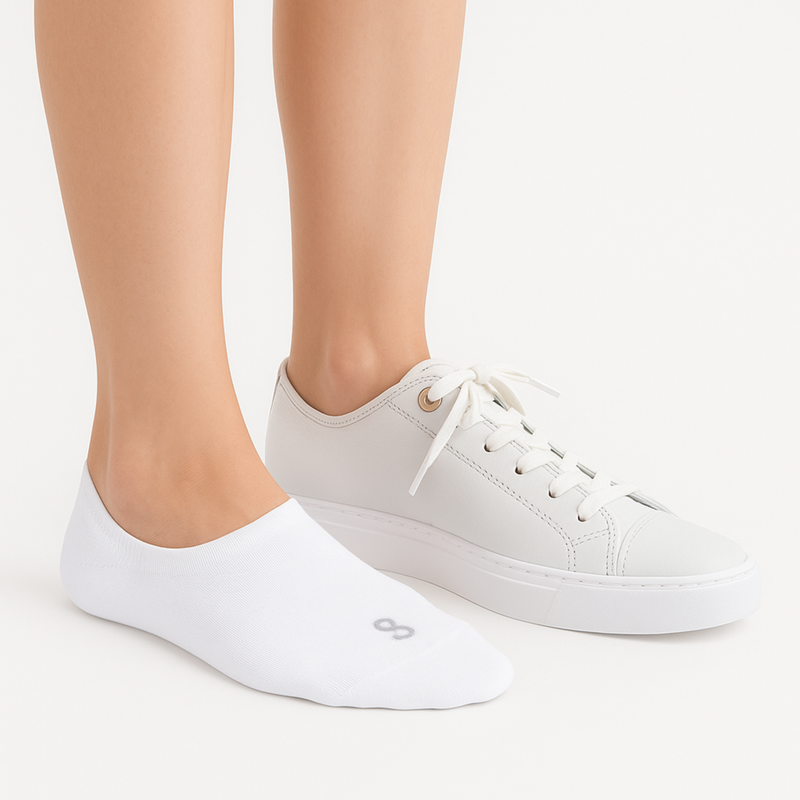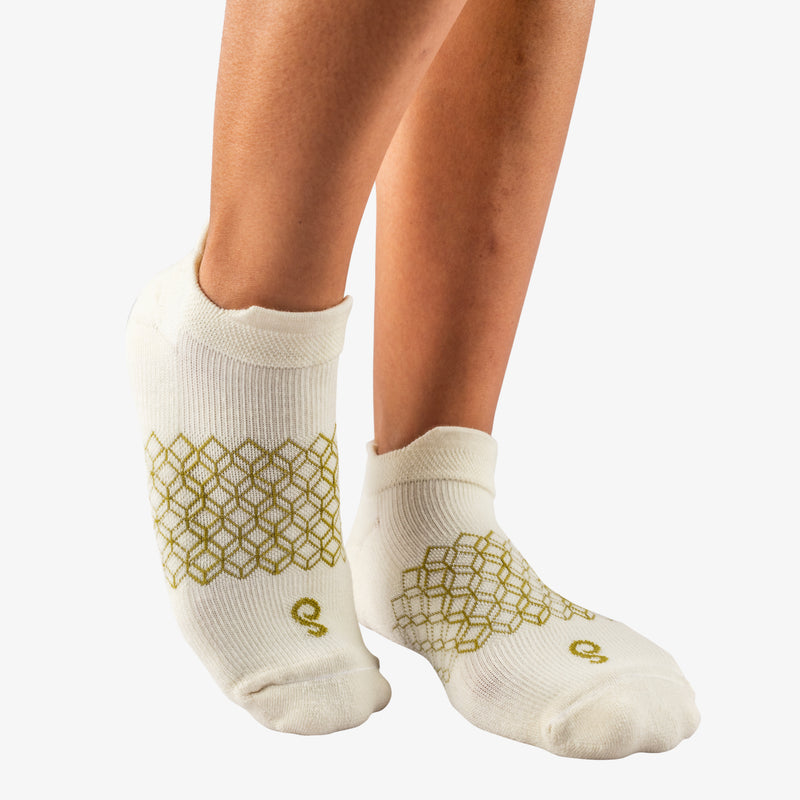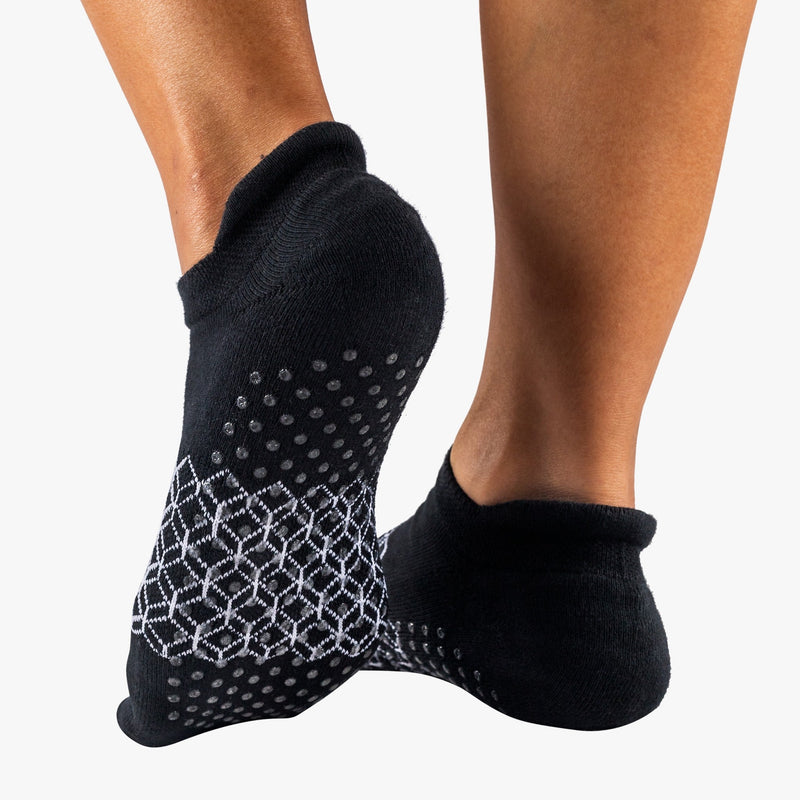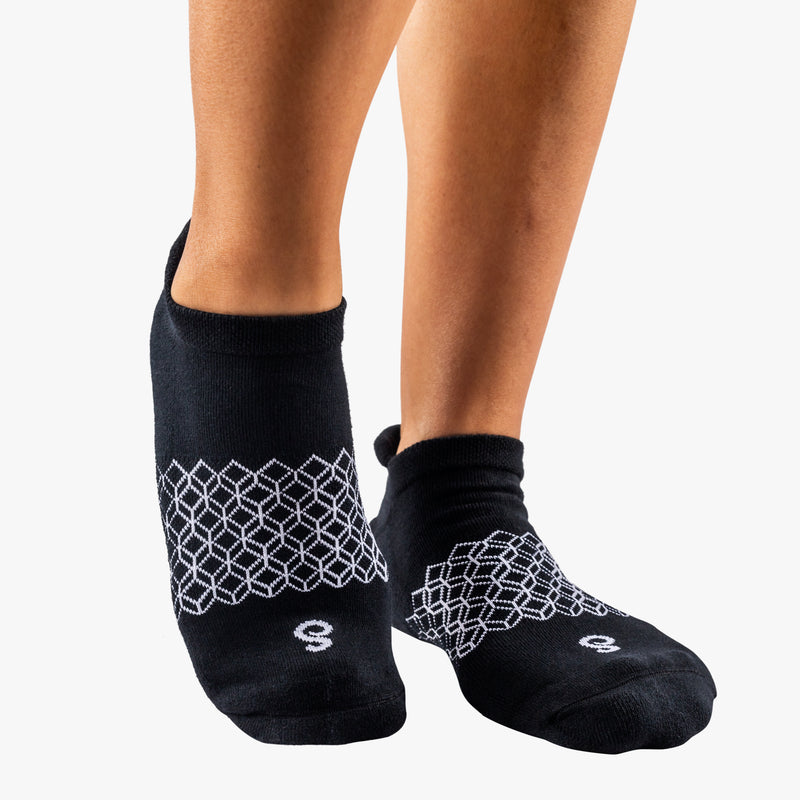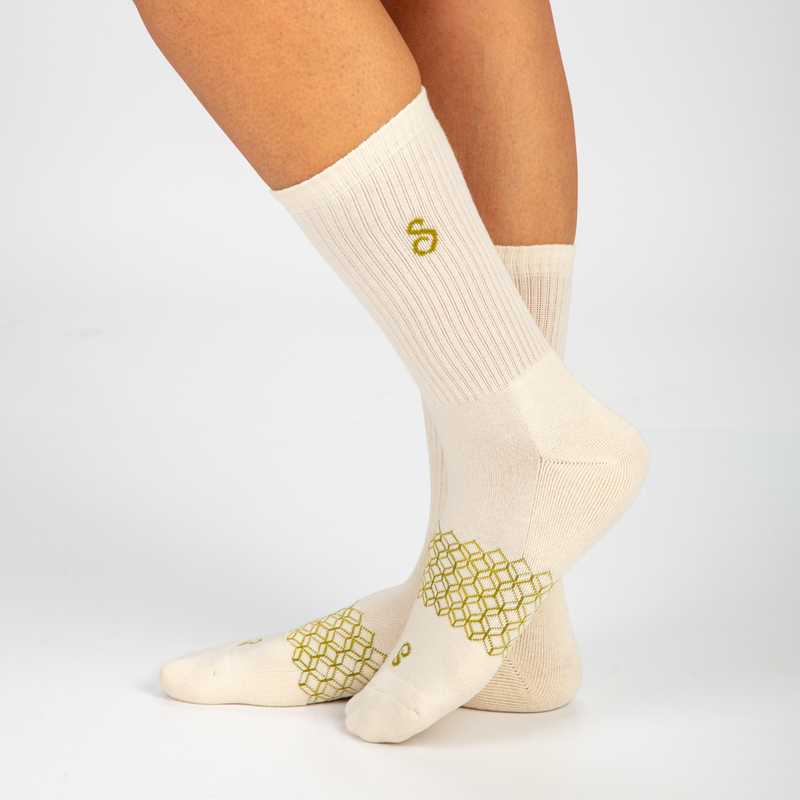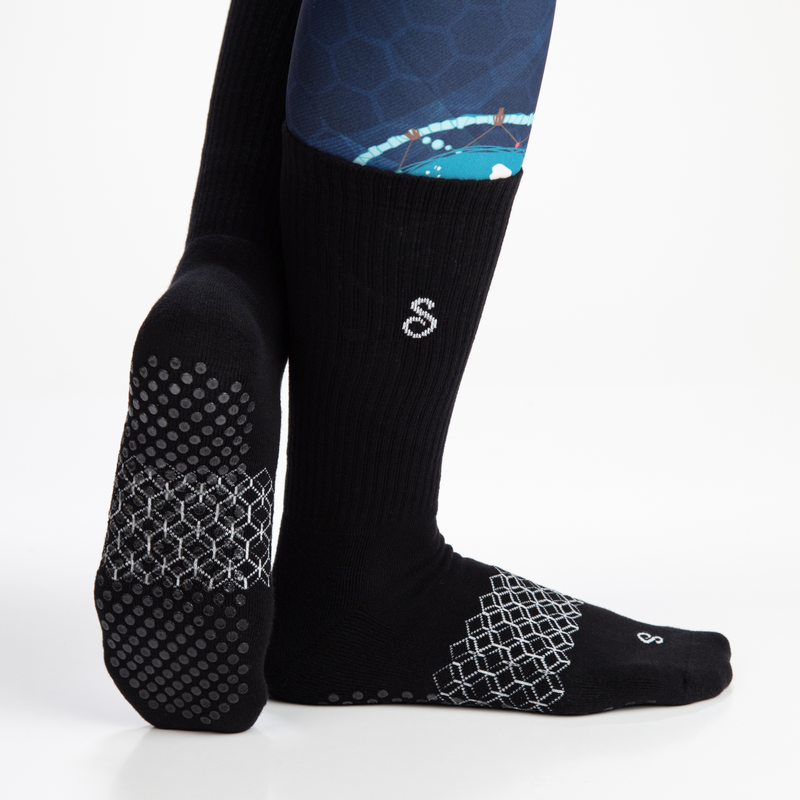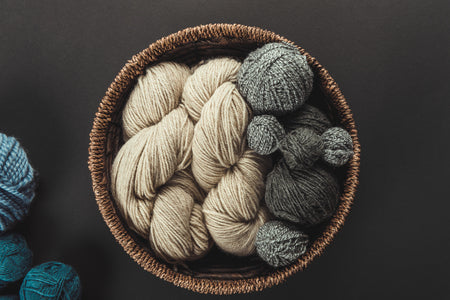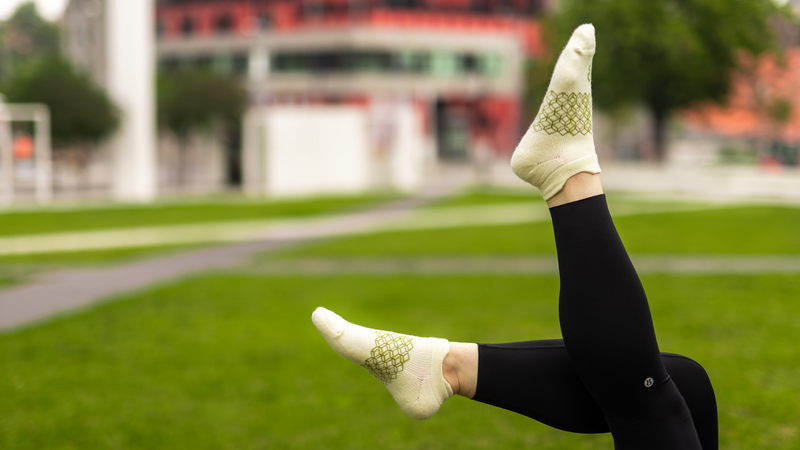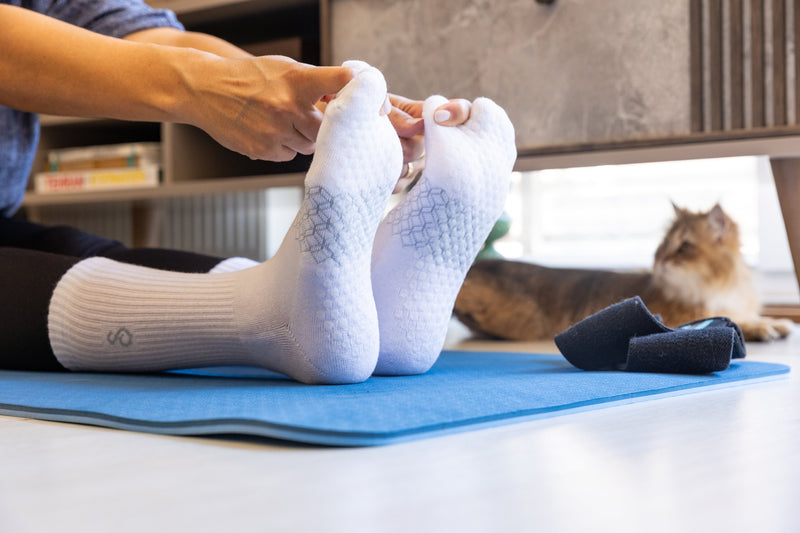
important note
The information in this article is general in nature and not specific to recommended care for hipSwan socks. As hipSwan socks use organic combed cotton and superfine merino wool as the base yarns, we recommend hand washing or cold-water machine washing, and line drying. It's also better to turn your hipSwan socks inside out for a more thorough cleaning. Avoid high temperatures especially for socks with silicone grips. If you're a hipSwan customer, we provide specific sock care instructions on every product page in the care instructions section and in the frequently asked questions section.
--
White socks are a wardrobe staple, but keeping them looking bright can be a challenge. To effectively whiten socks, using a combination of baking soda, vinegar, and hot water can remove discolouration and restore their original brightness. Many people struggle with stubborn stains, but simple methods can yield impressive results.

Regular washing and proper care can also prevent socks from turning dingy. Proper maintenance, such as washing socks separately and avoiding fabric softeners, makes a significant difference in their longevity and appearance. With the right techniques, anyone can achieve clean white socks with minimal effort.
Understanding the Causes of Discolouration

Socks can discolour due to various factors, including specific stains and washing practices. Identifying these causes can aid in preventing and treating discolouration effectively.
Identifying Common Stains
Several common stains contribute to the discolouration of socks. Dirt stains are prevalent, particularly for those who wear socks during outdoor activities. These stains often contain mud, which can cling to fabric if not treated promptly.
Food and drink spills pose another major issue. Substances like coffee or sauce can leave marks, especially on lighter fabrics. Bacteria can also play a role; accumulated moisture from sweat can create a breeding ground for bacteria, leading to yellowing or greying. Effective stain identification is crucial for selecting the appropriate cleaning method.
Impact of Washing Habits on Sock Colour
Washing habits significantly affect sock colour and longevity. Using hot water can remove stains effectively, but it may also cause colours to fade over time. On the other hand, cold water is gentler, but it may not eliminate all stains, especially stubborn ones.
Neglecting to sort laundry can also lead to discolouration. Washing white socks with coloured items can result in colour transfer, leading to unwanted tints. Lastly, inadequate drying can promote mildew, leading to more discolouration. Maintaining consistent washing practices is vital for preserving the original look of socks.
Pre-Wash Treatments for Whiter Socks

Pre-wash treatments can significantly enhance the brightness of socks before they are washed. Sorting laundry effectively and employing suitable pre-soak methods can lead to a notable improvement in sock whiteness.
Sorting Laundry Effectively
Sorting laundry plays a key role in achieving whiter socks. By grouping similar items together, stains are less likely to transfer. White socks should be washed with other whites to avoid discolouration from coloured fabrics.
Using a separate wash cycle can help prevent colour bleed. Additionally, inspect each item for spots or stains. Pre-treat any noticeable marks with stain removers before the wash. This careful sorting ensures that whiter socks remain untarnished, resulting in a cleaner and brighter appearance.
Pre-Soak Methods
Pre-soaking socks can effectively lift stains and brighten colours. Fill a bucket with warm water and add either vinegar or lemon juice. Both ingredients are natural whiteners and have stain-fighting properties.
For vinegar, use about one cup per gallon of water. For lemon juice, a similar amount will suffice. Soak the socks for 30 minutes to an hour. After soaking, wash as usual to see enhanced brightness. These methods promote cleanliness without damaging the fabric, offering a simple yet effective solution for maintaining white socks.
Choosing the Right Detergents and Whiteners

Selecting effective cleaning agents is essential for maintaining the brightness of socks. The right products can enhance cleaning performance while also addressing specific needs, such as environmental concerns or fabric types.
Traditional Detergents
Laundry detergents often contain surfactants that lift dirt and stains. The choice between powder and liquid varies based on personal preference.
- Powder detergents are typically more effective in hard water and can contain enzymes that break down organic stains.
- Liquid detergents dissolve quickly and are suitable for stain treatment prior to washing.
Some traditional detergents include optical brighteners, which can temporarily enhance whiteness but do not remove stains. It is advisable to follow the manufacturer's instructions regarding dosage to avoid residue buildup on fabrics.
Bleaching Agents
Bleaching agents, like chlorine bleach and oxygen bleach, can significantly whiten socks.
- Chlorine bleach is a potent option but should be used cautiously as it can weaken fabrics over time. Always dilute it in water before application.
- Oxygen bleach is a safer alternative for coloured fabrics and is effective at stain removal without the harshness of chlorine.
When using bleach, it is vital to follow garment care labels to prevent damage. Ensuring proper ventilation and using gloves are also recommended during use.
Eco-Friendly Alternatives
For those prioritising sustainability, eco-friendly detergents and whiteners have become increasingly popular.
These products often utilise plant-based ingredients and enzymes to lift stains without harmful chemicals.
- Laundry soaps made from natural ingredients can be effective and gentle on delicate fabrics.
- Brands that emphasise biodegradable packaging and cruelty-free testing may appeal to environmentally conscious consumers.
It is important to read labels carefully to identify the safest and most effective options. Some eco-friendly whiteners may not have the same potency as traditional chemicals, so users should manage expectations accordingly.
The Whitening Process

The process of whitening socks can be effectively achieved through several methods, including soaking, boiling, and using a washing machine. Each technique has its advantages and specific steps that can enhance the whiteness of the fabric.
Soaking Techniques
Soaking is an efficient way to remove stains and whiten socks. Begin by filling a basin or bucket with hot water. Add a suitable cleaning solution, such as oxygen bleach or baking soda, to the water. The recommended ratio is about 1 cup of cleaning solution for every gallon of water.
Place the socks in the mixture, ensuring they are fully submerged. Let them soak for at least 30 minutes to an hour. This process helps lift dirt and discolouration.
After soaking, gently agitate the socks to enhance the cleaning action. Rinse them thoroughly under cold water before drying. Regular soaking can significantly improve the brightness of white socks.
The Boiling Method
The boiling method is potent for tough stains and heavy discolouration. To start, fill a large pot with water and bring it to a rolling boil. Once boiling, add the socks and about half a cup of laundry detergent or oxygen bleach for extra whitening power.
Allow the socks to boil for about 10 to 15 minutes. This high temperature effectively breaks down stubborn stains.
After boiling, carefully remove the socks using tongs, as they will be hot. Rinse them with cold water to stop the cleaning process and cool them down. This method is ideal for restoring heavily stained white socks.
Washing Machine Cycles
Using a washing machine simplifies the whitening process for large batches of socks. To start, sort the socks according to colour, ensuring only whites are in the load. Select a hot cycle on the washing machine for optimal whitening.
Add your usual laundry detergent, and consider including an additional whitening agent, such as bleach or oxygen bleach (follow manufacturer instructions).
For best results, wash the socks on the normal cycle first, then follow up with a hot cycle if discolouration persists. Always check the care labels on socks to prevent damage. This method ensures thorough cleaning and effective whitening in one go.
Special Considerations for Different Sock Materials

Different sock materials require specific care methods to maintain their whiteness and overall condition. Understanding how to treat each type of material is essential for effective cleaning.
Caring for White Cotton Socks
White cotton socks are common and can be cleaned effectively using various methods. Washing them in hot water helps to remove stains while maintaining their brightness.
A mixture of white vinegar and baking soda can enhance the whitening process. Combine 1 cup of vinegar with ½ cup of baking soda in the wash to tackle stubborn stains.
For drying, it is advisable to avoid direct sunlight, as this can cause yellowing over time. Instead, air drying in a shaded area is preferred. Additionally, using a mild detergent designed for white clothing will prevent fading.
Handling Wool and Delicate Fibres
Wool socks require careful handling due to their delicate fibres. Washing them in cold water is essential, as hot water can cause wool to shrink.
Using a gentle detergent specifically formulated for wool is advisable. Avoid bleach or harsh chemicals, as these can damage the fibres and lead to discolouration.
When drying, it is best to lay the socks flat on a towel. This method helps maintain their shape and prevents stretching. Wool should never be wrung out; instead, press the water gently to remove excess moisture. Proper care ensures that wool socks remain bright and retain their softness.
Alternative Whitening Methods

There are various effective methods to whiten socks using natural ingredients or simple homemade solutions. These methods can help restore the original brightness without resorting to harsh chemicals.
Leveraging Natural Acids
Natural acids such as lemon juice and vinegar offer beneficial properties for brightening socks. Lemon juice contains citric acid, known for its stain-removing capabilities.
To use lemon juice, he can mix half a cup of lemon juice with a bucket of warm water. Soaking the socks for one to two hours before washing can yield noticeable results.
Vinegar serves as an excellent alternative as well. It contains acetic acid, which helps lift stains and whiten fabric. Adding one cup of white vinegar to the washing machine or a soak can enhance the brightness of the socks.
DIY Whitening Solutions
Baking soda and hydrogen peroxide form a potent combination for an effective DIY whitening solution. Mixing four tablespoons of baking soda with a quarter cup of hydrogen peroxide creates a paste.
He can apply this paste directly to stained areas, allowing it to sit for 30 minutes before rinsing. This method effectively tackles stubborn stains without damaging the fabric.
Another option is using a few drops of dishwashing liquid mixed with water. Soaking the socks in this solution for 30 minutes can also help to lift dirt and enhance whiteness. After soaking, he should wash the socks as usual and allow them to air dry for best results.
Maintaining Whiteness and Preventing Discolouration

To keep socks white and prevent discolouration, regular washing and proper storage are essential. Using the right techniques can restore shine and maintain the brightness of white socks for longer periods.
Regular Washing Tips
Washing socks frequently is vital for maintaining their whiteness. It's recommended to wash white socks separately from coloured items, as dye transfer can lead to unwanted tinting.
- Use a high-quality detergent designed for whites.
- Add a whitening agent like baking soda or a small amount of bleach for stubborn stains. Ensure to follow the instructions carefully to avoid fabric damage.
Washing in warm water helps lift dirt and grime effectively. Additionally, air-drying socks in sunlight can enhance their brightness. The UV rays work as a natural whitener while also preventing mildew. Avoid using fabric softeners, which may lead to discolouration over time.
Storage and Prevention Techniques
Proper storage can significantly impact the longevity of sock whiteness. Avoid folding white socks in a way that causes them to stack in tight spaces, which may trap moisture and lead to yellowing.
- Store socks in a cool, dry sock drawer rather than a plastic bag, which can create an environment for mildew.
Incorporating a few silica gel packets can help absorb excess moisture. If socks become discoloured, consider re-washing them with an additional whitening agent. Regular checks for stains or signs of wear can also facilitate timely restoration efforts. Keeping the sock drawer organised can prevent unnecessary tangling that may lead to fabric damage.
Troubleshooting Common Whitening Challenges

Whitening socks can present a variety of challenges, especially with persistent stains and other factors influencing the restoration of their whiteness. Addressing these issues effectively requires understanding specific techniques and the underlying causes.
Dealing with Persistent Stains
Persistent stains on socks often originate from grime, dirt, or sweat accumulation. For stubborn stains, it is crucial to treat them promptly.
-
Pre-treatment Solutions: Apply a stain remover directly to the affected area before washing. Common choices include white vinegar, baking soda, or commercial stain removers specifically designed for fabrics.
-
Proper Washing Temperature: Wash socks in hot water, as this helps to break down grease and grime. Always check the fabric care label to avoid damage.
-
Soaking: Soaking the socks in a solution of water and oxygen bleach for several hours can help lift ingrained stains without causing harm to the fabric.
-
Drying Methods: After washing, avoid placing socks in direct sunlight if they are prone to discolouration. Air-drying in a shaded area is often ideal for maintaining their whiteness.
Factors Affecting Whiteness Restoration
Several factors can impact the effectiveness of whiteness restoration for socks. Understanding these can help achieve better results.
-
Fabric Type: Natural fibres like cotton respond differently to whitening agents than synthetic materials. It is essential to consider the specific care instructions for different fabrics.
-
Water Quality: Hard water, with high mineral content, can hinder the effectiveness of washing detergents. Using a water softener or distilled water can improve cleaning results.
-
Frequency of Washing: Over time, build-up from detergents or fabric softeners can lead to discolouration. Ensure regular washing with appropriate products to prevent this.
-
Exposure to Stains: Dirty or grubby socks left untreated will become harder to clean. Immediate attention to stains is crucial for maintaining their appearance in the long run.
--
Related content from the sock knowledge blog
How to make your socks last longer
5 ways you can do your laundry more sustainably
The evolution of sock materials
Tencel, lyocell, and modal fabrics: everything you need to know






